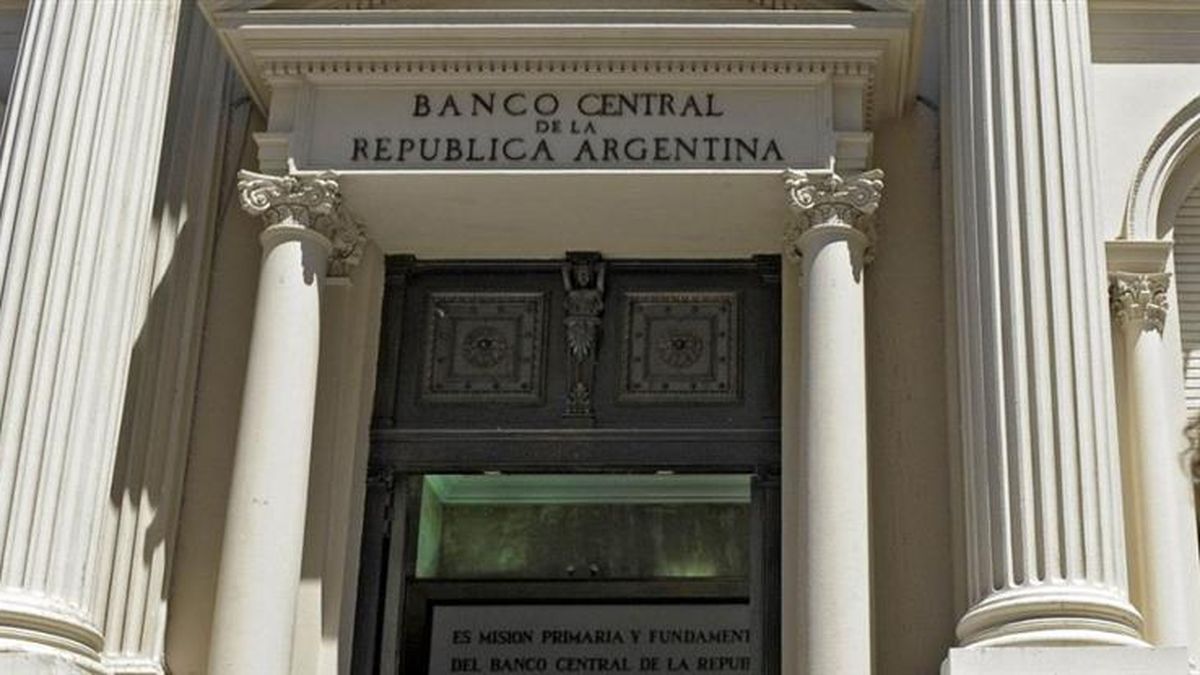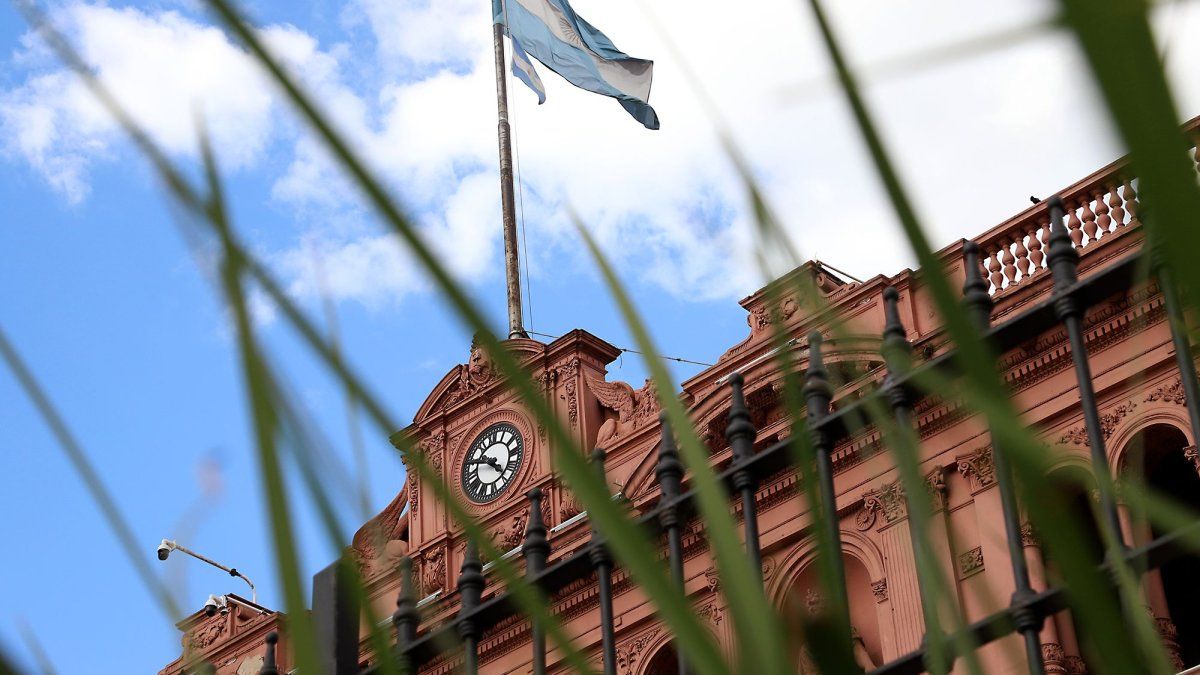The economic team is advancing in the liquefaction of the pesos in circulation and savings with the focus on reducing the mass of liabilities of the Central Bank and paving the conditions for a lifting of the exchange rate. But, at the same time, as Ámbito said days ago, the adopted scheme hides a growing stock of “latent debt” for the BCRA which is generated by the placement of repurchase options to encourage the migration of banks’ holdings towards Treasury securities. The truth is that, just over two months after the start of the current administration, the joint stock of remunerated liabilities of the Central plus this latent debt not only was it not reduced but grew almost 20% in real termsaccording to private calculations.
In recent weeks the growth of this mass of liquidity insurance (known as puts in financial jargon) that the monetary authority sells to the banks to guarantee that it will be present as a buyer when they want to get rid of the bonds placed by the Ministry of Economy. In fact, In last week’s Treasury peso debt tender, financial entities took 95% of the almost $4.9 billion placed and they covered them with the contracting of the puts offered by the BCRA. In the last five auctions, they did not drop below 77%, according to estimates by Facimex Valores.
According to the consulting firm 1816, as of February 15, the net stock in force of liquidity insurance already amounted to $9.7 billion and represented a third of the paid liabilities ($29 billion), as this media reported. As of today, it is expected that the amount has increased. This dynamic raises a series of risks: In the event that the market mood alters and there is some financial shock, the banks could massively execute the repurchase options and the Central Bank would be forced to issue the pesos necessary to pay for them, which could feed back into that eventual run. Furthermore, the scheme used by the tandem Luis Caputo – Santiago Bausili opens a question mark: does the market doubt the sustainability of the fiscal adjustment via the blender plan?
The economist, teacher and researcher Damian Pierri, who is part of the Autonomous University of Madrid and is an associate researcher at the Interdisciplinary Institute of Political Economy of Buenos Aires of the UBA and CONICET, analyzed the problem. “The sum of remunerated liabilities plus contingent liabilities (puts only) has grown almost 20% in real terms so far in the administration, that is, in less than three months,” Pierri said in dialogue with Ambit.
Its calculation excludes the monetary base, which is rapidly liquefying. The researcher specified that, measured in constant pesos at the value of December 11, the stock of remunerated liabilities of the BCRA (formerly Leliq and Pases and now Pases) fell 14.6% from $22.5 billion to $19.2 billion. Instead, If the combined stock of paid liabilities and puts is taken, it expanded 19.7% in real terms from $22.8 billion to $27.3 billion (always at December 11 values).
image.png
So much Javier Milei like the economic team maintain that the exit from the stocks It depends on the improvement in the Central balance sheet. For this reason, they celebrate the purchase of foreign currency accumulated after the devaluation (although net reserves are still negative at around US$5.5 billion) and the liquefaction of the monetary base and the Passes, something that the President also considers a key step for the widely questioned dollarization.
But Pierri points out that the balance is not being healed “at the rate that arises from looking at the broad monetary base” (the base plus the Passes). Because if the latent debt of the Central Bank represented by the stock of puts is incorporated, “the peso obligations of the BCRA without the base grow above inflation.”
These liquidity insurance For banks to agree to migrate from Passes (BCRA debt with a negative rate but with a single day term) to the securities placed by the Ministry of Finance (with a less negative rate, but longer term and with Treasury risk) is one of the key tools in official strategy to reduce the stock of paid liabilities in pesos in real terms. In fact, weeks ago, it expanded the scope of puts for securities maturing until the end of 2027 (previously they went until 2025). The other tools are: the brake on monetary issuance to assist the treasury from the fiscal adjustment shock, the liquefaction of savings by reducing the interest rate in a context of escalating inflation and the dollarization of a part of the liabilities. from the BCRA through BOPREAL.
The problem is that the debt protected through insurance, “although it is from the Treasury, having puts is equivalent to being placed overnight and being from the Central Bank,” said Emiliano Anselmi, chief economist at Portfolio Personal Inversiones.
The doubts of the market
What does the fact that the BCRA needs to sell insurance so that banks dismantle repos and migrate to the Treasury demonstrate? For some analysts, it is a sign of distrust in the social and political sustainability of the shock adjustment plan through the liquefaction of public spending (especially in pensions, social spending and other very sensitive items) as a way to achieve a surplus. tax that the market craves.
“What are puts? A measure of lack of credibility of the model in general and the fiscal adjustment in particular which arises among other things from noisy communication. The banks They are happy to exchange Leliq (now Passes) for public securities, but they do not jump without a net. They ask for insurance”Argued Pierri. And he maintained that the Government should explore the possibilities of bidding without puts after the January fiscal result.
Ramiro Tosiformer undersecretary of Financing of Martín Guzmán and current director of the consulting firm Suramericana Visión, warned that the issuance of these insurances is a policy that is very difficult to reverse. “Giving puts is like using a crutch. If you really believe in fiscal consolidation and improving the Government’s repayment capacity, they should not be necessary. I mean, I could walk alone. But banks always ask for something more. And then they migrate from Passes to the Treasury but having a network (which the rest do not have) in case an accident occurs,” he considered in dialogue with Ámbito.
BCRA: the risks of the strategy
Beyond the fact that banks today require insurance to accept migration, to a certain extent today the market It seems that he “chooses to believe” in the official adjustment strategy that liquefies income and savings at record speed, and that impacts consumption, productive activity and poverty levels. Or, at least, this is reflected in the compression of the exchange gap and the rise in sovereign bonds. Although, according to 1816, “there are reasonable doubts” about its sustainability since, for this to happen, it is necessary “that people be very patient with the adjustment (something difficult to predict) and/or that the fiscal balance does not depend only on liquefaction (and that implies working with the Congress)”.
In this framework, the placement of repurchase options brings with it a latent risk. In case the market mood suffers some shock and that unleashes a massive execution of puts On the part of the banks, the BCRA would have to issue to buy back those insured Treasury bonds, which would reverse the monetary adjustment. The point is whether this eventual release of pesos would end up encouraging a run to the dollar (even more so in the event of the release of the stocks) or the stock of remunerated liabilities would once again increase in the event of an immediate sterilization. “It could be both,” Pierri said.
“In a bullfight, the demand for pesos falls and the puts increase the supply of pesos, fueling the bullfight. This is a substantial difference compared to economies with a stable currency, where puts provide liquidity, but do not finance the run against the currency,” added the economist, who considers that this represents an obstacle to dismantling the stocks.
At this point, Tosi points out that insurance represents a problem, although he provides a nuance: “Puts are a sales option. Therefore, it is a more ‘long-term’ potential issue with respect to the Passes that, if they are not renewed (they are 1 day), expands your base instantly. Ergo, if one thinks about unification and/or eventual dollarization, puts are not as immediate a restriction as Passes are. I mean, they matter but it’s not that they take you that far away from that path.”
notice-companies.jpg

Source: Ambito




